Commonly Abused Drugs in Tampa
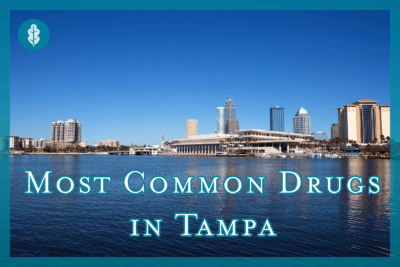 Located in Central Florida along the coast in Hillsborough County, Tampa is one of the largest cities in the state and considered part of the Tampa Bay metropolitan area. The number one substance of abuse in Hillsborough County, Florida, is alcohol. The 2013 Profile of Alcohol and Drug Indicators for Hillsborough County, Florida publishes that more residents of Hillsborough County die of alcohol-related causes than in any other county in the state.
Located in Central Florida along the coast in Hillsborough County, Tampa is one of the largest cities in the state and considered part of the Tampa Bay metropolitan area. The number one substance of abuse in Hillsborough County, Florida, is alcohol. The 2013 Profile of Alcohol and Drug Indicators for Hillsborough County, Florida publishes that more residents of Hillsborough County die of alcohol-related causes than in any other county in the state.
In general, Floridians abuse illicit drugs at rates that are similar to national averages, the Behavioral Health Barometer: Florida, 2015 indicates. After alcohol, marijuana is the most commonly abused drug by residents of Hillsborough County, according to the Profile of Alcohol and Drug Indicators for Hillsborough County, Florida published in June 2015.
Controlled prescription drugs, including prescription opioid painkillers and benzodiazepine sedatives and tranquilizers, constitute a large threat in Florida and Tampa specifically.
The Central Florida High Intensity Drug Trafficking Area (HIDITA) Drug Market Analysis 2011 cited controlled prescription drugs as the number one drug threat in the region. The Florida Poison Information Center- Tampa reports that seven residents of Florida die every day from the misuse of prescription medications.
As prescription painkillers are becoming more tightly regulated within Florida, the door may be opening for increased heroin and synthetic fentanyl use and abuse. In Florida, in the first six months of 2015, deaths from overdoses related to illicit opioid drugs increased six times (per capita) over 2007 numbers, the Miami Herald warns.
Being a harbor town with close proximity to Central and South America, Tampa also suffers from cocaine trafficking and therefore high abuse rates. The Florida Alcohol and Drug Abuse Association, FADAA, reports that easy access to Columbian cocaine is likely contributing to the increasing number of cocaine overdose deaths in Florida in recent years.
While the top five drugs of abuse can change from year to year, the current top drugs of abuse in Tampa are:
- Alcohol
- Marijuana
- Controlled prescription drugs
- Cocaine
- Heroin
Tampa Alcohol Abuse Statistics & Facts
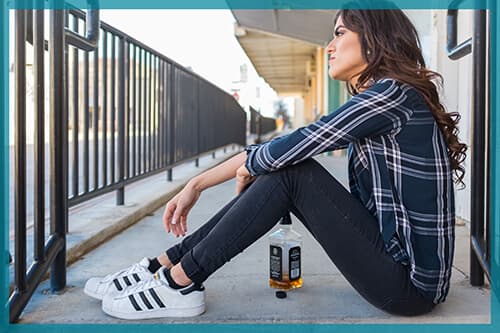
Alcohol is the most commonly used addictive substance by Americans, per the National Council on Alcoholism and Drug Dependence (NCADD). Close to one out of every 12 adults in the United States struggles with alcohol abuse or dependence. It is also the most commonly abused substance in Tampa, Florida, and within Hillsborough County.
Drinking alcohol, when a person is of the legal drinking age of 21, in moderation and responsibly is not necessarily a problem; however, patterns of excessive drinking can create issues. Binge drinking is a type of excessive drinking that brings a person’s BAC (blood alcohol concentration) to 0.08 g/dL or above, the National Institute on Alcoholism and Alcohol Abuse (NIAAA) reports). This generally happens when a man drinks four drinks, or a woman drinks five, in the span of about two hours.
The National Survey on Drug Use and Health (NSDUH) Report: Metro Brief for the Tampa-St. Petersburg-Clearwater Florida metropolitan statistical area (MSA) reports that nearly one-quarter of all of its adult residents participated in binge drinking in the past month. These rates are similar to national averages and Florida averages, in general.
Hillsborough County, however, has the highest rates of DUI-arrests and alcohol-related fatalities in the state, the 2017 Profile of Alcohol and Drug Indicators for Hillsborough County, Florida reports. Over 4,000 people were arrested for a DUI in Hillsborough County, Florida, in 2016, which was an increase over the number of arrests the previous year. Half of these arrests were made by the Tampa Police Department.
Movement and coordination are impaired with alcohol use as well. It is also central nervous system depressant that lowers body temperature; slows respiration, blood pressure, and heart rate; and induces relaxation and sleepiness while decreasing anxiety and stress.
Underage drinking is higher in Hillsborough County than Florida averages, as 40 percent of youth report consuming alcohol at some time in their lives compared to a statewide average of 39 percent of youth. The 2016 Florida Youth Substance Abuse Survey (2016 FYSAS) publishes that one out of every 10 high school students admits to binge drinking, and one out of every six students say that they have passed out from drinking.
Drinking excessively and drinking before the legal age of 21 can increase the risk that a person will struggle with addiction later in life. The Centers for Disease Control and Prevention (CDC) warns that if a person drinks before the age of 15, their risk for battling alcohol addiction as an adult increases six-fold over those who wait to drink until they are of legal age. Alcohol interferes with the natural production and movement of some of the brain’s messengers, or neurotransmitters, which can impact developing brains and alter the brain’s circuitry with repeated and chronic interference.
Alcohol addiction can be a side effect of repeated episodes of excessive drinking, especially when a person is underage. Almost 30,000 Floridians entered an addiction treatment program citing alcohol as their primary substance of abuse in 2016, FADAA reports, which makes up over one-third of all treatment admissions for the calendar year.
Almost 30,000 Floridians in 2016 entered an addiction treatment program for alcohol.
Tampa Marijuana Statistics & Facts
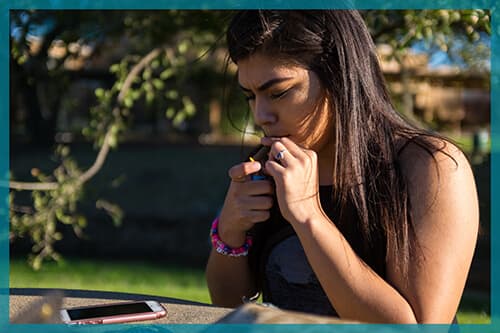 The second most commonly abused drug in Tampa and Hillsborough County is marijuana, which is still considered an illegal drug within the state of Florida (except for medicinal use). The Tampa Bay Times reports that nearly 2,000 arrests were made for marijuana possession by Tampa police in 2015. Close to 20 percent of all addiction treatment facility admissions in 2016 in the state of Florida cited marijuana as their primary drug of abuse, FADAA publishes.
The second most commonly abused drug in Tampa and Hillsborough County is marijuana, which is still considered an illegal drug within the state of Florida (except for medicinal use). The Tampa Bay Times reports that nearly 2,000 arrests were made for marijuana possession by Tampa police in 2015. Close to 20 percent of all addiction treatment facility admissions in 2016 in the state of Florida cited marijuana as their primary drug of abuse, FADAA publishes.
Drug trafficking organizations (DTOs) run a large number of indoor cannabis cultivation operations in Central Florida, the Central Florida HIDITA reports, increasing access to marijuana in the region. Over 11 percent of Florida students reported past-month marijuana use, per the 2016 FYSAS, which is a decline of about a percent from the previous year. Students in Hillsborough County used marijuana at rates just above the state average (11.9 percent compared to 11.2 percent) at the time of the 2016 survey, the Profile of Alcohol and Drug Indicators for Hillsborough County, Florida reports. Marijuana was also detected in 20 percent of all drug overdose deaths during the first six months of 2016, per FADAA.
Marijuana is a psychoactive substance that has both hallucinogenic and depressant qualities. It can alter a person’s perceptions of time and their senses while increasing pleasure and promoting relaxation.
Marijuana comes from the Cannabis sativa plant, and typically, the dried flowers, seeds, or stems are harvested for use. Marijuana can be smoked as a joint (rolled cigarette), through an e-cigarette device (vaped or dabbed), or inhaled through a water pipe (bong). It can also be infused into drinks or edibles and ingested.
Marijuana impairs a person’s memory, movement, and coordination; alters decision-making and thinking abilities; and changes moods. It starts working pretty quickly after it enters the bloodstream, and the effects usually don’t last longer than an hour.
Marijuana is considered to be an addictive substance as it interferes with the brain’s ability to regulate emotions and feel pleasure, potentially changing its chemical makeup. NIDA warns that around 30 percent of people who use marijuana may struggle with addiction to the drug. The risk for developing addiction to marijuana increases when it is abused during childhood and adolescence.
Commonly Abused Prescription Drugs in Tampa
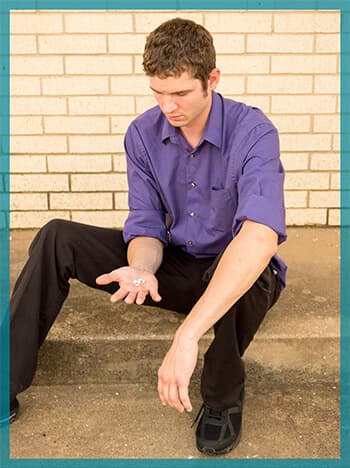 Florida is in the midst of a prescription drug abuse epidemic that garnered national attention as the “pill mill capital” of the United States. In 2011, the Tampa Bay Times reports that Hillsborough County alone had 107 pain clinics dispensing powerful narcotics often through shady means and for nonmedical reasons. These painkillers are extremely addictive and highly dangerous.
Florida is in the midst of a prescription drug abuse epidemic that garnered national attention as the “pill mill capital” of the United States. In 2011, the Tampa Bay Times reports that Hillsborough County alone had 107 pain clinics dispensing powerful narcotics often through shady means and for nonmedical reasons. These painkillers are extremely addictive and highly dangerous.
In 2017, Florida’s Governor Rick Scott declared the opioid crisis a public health emergency, NBC News reports. The 2015 Annual Report published by the Florida Department of Law Enforcement Medical Examiners Commission reported that over 5,000 Floridians died in 2015 with at least one prescription drug in their system.
Most Abused Prescription Drug in Tampa
Prescription opioid drugs, including oxycodone, hydrocodone, methadone, morphine, and fentanyl, are some of the most common causes of drug overdose deaths. Benzodiazepine prescription drugs (alprazolam and diazepam) are also commonly present in drug overdose fatalities. Controlled prescription drugs are considered a major drug concern in Central Florida and the number one cause of overdose fatalities in the region, the Central Florida HIDITA reports. Prescription drugs were involved in 220 of the 281 drug-related deaths in Hillsborough County in 2015, per the Profile of Alcohol and drug Indicators for Hillsborough County, Florida. Prescription drugs also ranked third as primary substances of abuse for addiction treatment admissions in Hillsborough County for the fiscal year (FY) 2014/2015.
Opioid pain relievers are central nervous system depressant drugs that not only control and minimize pain signals in the brain but also serve to reduce anxiety and stress, and increase sedation and relaxation. When taken recreationally, or outside of medical necessity, these drugs can create an intoxicating “high.” They are also considered to be highly addictive, and the American Society of Addiction Medicine (ASAM) publishes that about 2 million Americans battle addiction to prescription opioid drugs.
Prescription sedatives and tranquilizers, benzodiazepines, are central nervous system depressant drugs that are often intended to treat anxiety and sleep disorders. They may also induce a desirable high when abused. When a prescription medication is taken outside of its intended and prescribed means, this is considered abuse. These drugs may be swallowed, chewed, or crushed and then snorted, smoked, or injected. As central nervous system depressants, they slow breathing, heart rate, and blood pressure, which can be extremely dangerous and lead to a potentially life-threatening overdose. Long-term use and/or misuse of these drugs can also contribute to addiction.
Approximately 2 million Americans battle addiction to prescription opioid drugs.
Tampa Cocaine Abuse Statistics & Facts
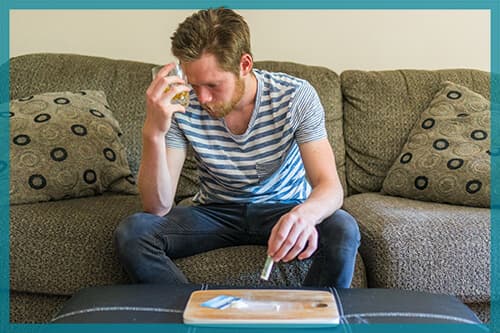 Cocaine-related deaths increased more than 30 percent from 2014 to 2015 in Florida, the 2015 Annual Report publishes, and cocaine was the second-highest cause of drug-related death for that year (behind benzodiazepines). Tampa is a port city with easy access to South America and Columbia, where cocaine often comes from.
Cocaine-related deaths increased more than 30 percent from 2014 to 2015 in Florida, the 2015 Annual Report publishes, and cocaine was the second-highest cause of drug-related death for that year (behind benzodiazepines). Tampa is a port city with easy access to South America and Columbia, where cocaine often comes from.
Cocaine is a plant-based stimulant drug processed from the coca plant. It is typically marketed as a white powder that can be snorted, smoked, rubbed on the gums, or injected. It is also sold as “crack” cocaine, which is a crystal rock-like form that is usually smoked.
Cocaine is an amphetamine that speeds up heart rate and blood pressure, increases body temperature, and increases energy and wakefulness while suppressing appetite. Cocaine raises the level of dopamine in the brain, which is it what creates the intense feelings of pleasure, or the high.
A cocaine overdose can cause irregular heart rhythms, heart attack, stroke, or seizures, which can be fatal, NIDA warns. Cocaine is also commonly combined with drugs like heroin (called a speedball) and alcohol, which can greatly elevate risks and potential for overdose.
Cocaine is an illegal street drug that makes its way onto the Florida streets through drug trafficking organizations and cartels, the Central Florida HIDITA reports. A recent increase in Columbian cocaine production is likely related to the spike in cocaine overdose deaths and use in Florida, Fox13 News reports.
This pattern of abuse greatly increases the odds that a person will suffer from cocaine addiction.
The 2017 Profile of Alcohol and Drug Indicators for Hillsborough County, Florida, reports that treatment admissions citing cocaine as the primary substance of abuse were close to 500 for county residents for the FY 2014/2015, most of which were for crack cocaine. Cocaine prevalence seems to vary from year to year; however, it currently appears to be readily available in Tampa, as it remains one of the top five drugs of abuse in the area.
Tampa Heroin Abuse Statistics & Facts
 Law enforcement efforts in Florida greatly reduced the number of pill mills in operation, and stricter regulations and tracking of controlled prescription medication dispensation helped to decrease the number of prescription opioids making their way onto the street for recreational use, at least initially, the Miami Herald reports.
Law enforcement efforts in Florida greatly reduced the number of pill mills in operation, and stricter regulations and tracking of controlled prescription medication dispensation helped to decrease the number of prescription opioids making their way onto the street for recreational use, at least initially, the Miami Herald reports.
Unfortunately, many people were already hooked on opioids. Making the prescription ones harder to come by may have opened the door for other opioid drugs – ones that can be illicitly manufactured and cultivated. Opioid overdoses and rates of abuse of these substances are increasing again rapidly. The Miami Herald further reports that overdose fatality numbers for the first half of 2016 were higher for fentanyl and heroin than they were for all of 2015, and that an average of 14 residents of Florida died from an opioid overdose every day during the first six months of 2016.
Heroin is an illegal opiate that comes from opium poppy plant, which often makes its way up into Florida from Columbia as a white or brown powder, or from Mexico as a black sticky substance called “black tar heroin.” It is injected, snorted, smoked, or inhaled when abused.
Fentanyl is a synthetic opioid that can be manufactured illicitly in laboratories, and it is often mixed with other opioids or used to “cut” and stretch heroin. This is a particularly dangerous practice as fentanyl is around 50 times more potent and powerful than heroin, NIDA warns. Fentanyl is often made into a white powder that may resemble heroin, or it can be pressed into tablets or pills. Users may be completely unaware that the drug they are ingesting is actually fentanyl and therefore take too much.
Both fentanyl and heroin-related deaths increased in Hillsborough County in 2015 compared to 2014 numbers, the 2017 Profile of Alcohol and Drug Indicators for Hillsborough County, Florida reports. As opioids, fentanyl and heroin act as central nervous system depressants, increasing pleasure while slowing down important life-sustaining functions and often resulting in a potentially life-threatening overdose. These drugs are also extremely addictive.